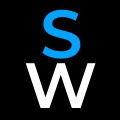Lyght — Project Management Software
The Problem
In the world of project management software there are plenty of options to choose from. Jira, the largest in the industry, is chalked full of integrations, plugins, and processes for various management styles. All of these options can sometimes make the software hard to use at times and create confusion on how the tool should be used. Next you have products such as Monday and Asana that are trying to give the same options and customizable components as Jira, but with a more intuitive user experience. They are still lacking key features such as time tracking, time reporting, and keeping all task & subtasks in one area.
At Ventive we decided to take the above mentioned giants head on, and solve the problems we, and others, dealt with on a daily basis.
The Solution
Lyght is a project management software that can be used by a single freelancer in any industry, to a full stack software development team creating the next Facebook. Two features set Lyght apart from the rest. First, it introduces a feature called assignments that allows a user to create a story and add multiple assignments to keep all related work together in one area. Second, it gives employees the option to track their time to the work they are doing. This gives business owners a granular view of how money and time is being spent within their organization.
My Role
I acted as a UX/UI Designer and Product Owner for the dashboard, on boarding, user profile, story creation, and assignment type customization features on the Lyght project. I was in charge of discovery, wireframing, prototyping, testing, high fidelity designs, feature time lines, and developer relations.
Discovery
At the beginning of each feature we started with a discovery phase which consisted of competitive analysis, user interviews, and the creation of user stories.
During user interviews we reached out to users with backgrounds ranging from architecture to event planning. We wanted to see if there was a need for a project management software outside of the SaaS world. We found that users were utilizing multiple tools such as Skype, Google drive, Slack, and Trello among other tools to communicate and pass work to each other. Yet they still had a desire to house multiple workflows all within a single tool. Users that worked on Asana or Monday expressed frustration with not being able to add multiple people to a story with making them a story owner or watcher. They wanted to be able to assign specific work from within a story. While small business owners desired a view of where their money was being spent, and where it would be best spent for the future.
After user interviews we would move to competitive analysis. Top companies we researched were Jira, Monday, Asana, Trello, Hive, and ClickUp among others. One of the main competitive analysis goals was to discover what was being done right and wrong with the specific features I was in charge of. After doing research of a specific feature I would then lay each flow out within Figma and review what I felt were things we would want to emulate or iterate on within Lyght.
Once I had a good idea of what direction I was going to take with a feature I would start to define the user stories. This would aid in not missing a step or flow that could be crucial to the user’s success.
Ideation
After gathering all needed information and gaining a clear path for a feature I would move into the ideation state. Here I would focus in on lo fi wireframing and rapid prototyping to display the ideas to the team, and receive any feedback they had.
Wireframing began with basic sketches of different layouts for a page or modal. This allowed me to get all of the good and bad ideas out quickly without spending time thinking about exact spacing, colors, or copy.
Once we had decided on a layout that would work best I moved into lo fi wireframes within Figma. Some components we had already already designed in high fidelity and would reuse the same component within the lo fi wireframes.
Design and Testing
After fine tuning each wireframe we moved into the testing and high fi design phase. We tested our designs on each other along with other project managers and product owners within our own office. One of the largest problems we encountered early on was the navigation within a project and within a story. While testing these features we would ask users to navigate to different areas. Every time this was tasked to a user they would struggle to find how to get to comments within a story, or how to find the team page within a project. We realized the drop down style navigation was being overlooked. We quickly moved to update the drop down style nav to a tab style navigation. Once this change was made we saw an increase in success when users were tasked with navigating through a story or project.
After updating the designs we were ready to push to development, and bring our work to life.
Final Designs
Outcome
We started this journey in early February and recently launched Lyght into an Open beta. It is very exciting to have live users on a product our team has poured their hearts and souls into. I would encourage you to go and use to product for yourself. Visit the Lyght homepage for more information, and the opportunity to use a product that could help change how you work for the better.
Thank you for reading this case study! If you enjoyed it please leave comments below or leave a clap or three.
